BY NINA CHIKANOV
“I’ve never thought this critically before in my life,” I found myself saying to my friends whenever we discussed how our classes were going abroad.
As a Computer Science & Engineering major, the majority of my courses over the past two years have been highly technical and STEM based, with a sprinkle of general and management classes thrown in. This is primarily due to the unique course requirements within the engineering school, if not specifically within CSE. With no language requirement and only five mandatory General Education courses, as well as the average of 4 classes per quarter needed to graduate in 4 years, there’s not too much time to expand beyond technical classes, at least based on my own study plan and goals (e.g. not impossible expand, just not in my case).
Coming abroad, in that regard, not only presented diversity of lifestyle and all the differences that come with living in a new country, but also offered me diversity in course selection.
This semester, I took four classes:
- Intermediate Spanish (note: I won’t be focusing as much on this course in this particular blog post, as it is a language class that is not required for my degree)
- Negotiating Identities in Madrid: Gender and Sexuality in Urban Space
- Immigration, Ethnicity, and Nation in Contemporary Spain
- Contemporary Spain through Icons & Images
Although I took two general classes before coming abroad (LING 1 and AN N EA 15), my mentality towards those courses was to use GEs as a “break” from STEM-based classes. Therefore, I still found myself prioritizing my major courses and consequentially did not delve as deep into each GE as I could have.
Therefore, I think taking an entire course load of non-technical classes at the same time gave me the unique opportunity to delve into and explore all the topics with full attention, instead of having them at the back of my mind.
Given the circumstances, then, let’s return to my opening thought: “I’ve never thought this critically before in my life.”
Arguably one of the best things about an engineering degree is the lack of essays. I cannot stand writing essays. I am perfectly content working way at math problems for hours instead of worrying about sentence structure, content, and analysis. But after spending the past four months writing essays and doing readings (so…many…readings), as well as integrating study visit experiences into my writing, I realized that the engineering brain does not always touch the critical, argumentative side of the brain that sorts through information to synthesize an argument during the writing process.

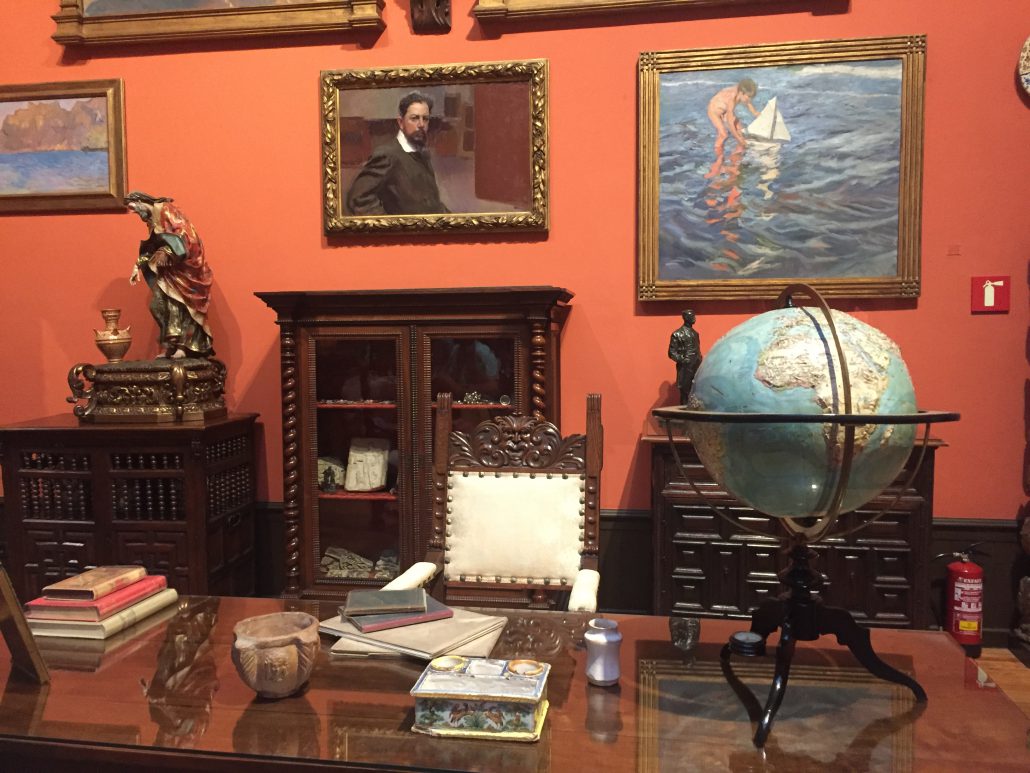
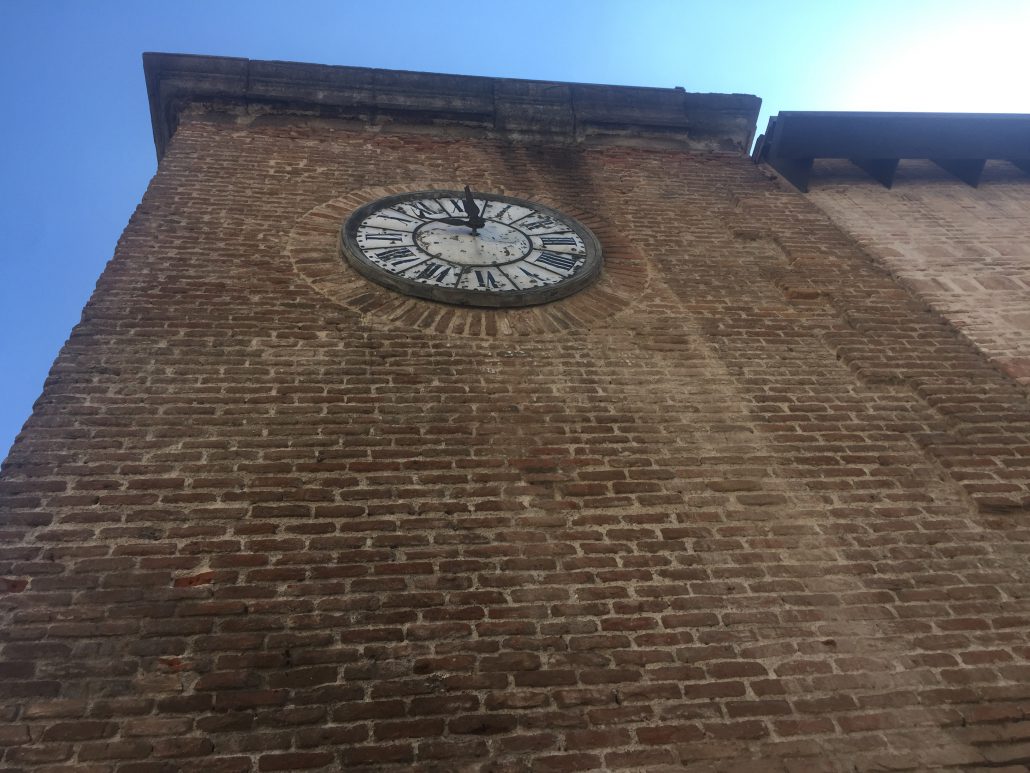
Top: Exhibition at Centro Centro in Palacio de Cibeles that we visited for a Spanish study trip. Middle: Museo Sorolla – art study visit. Bottom: Library in Lavapiés – Negotiating Identities walking tour.
We (engineers) are good at finding patterns by repetition and figuring out why things break sometimes (extraneous semicolons are the worst, am I right?) There is normally a set scientific theory or rule that should apply, there’s methodologies and algorithms that work better than others, and usually logical step-by-step process helps sort out issues.
The best way to study for STEM-based classes, in my opinion, is practice. Memorization is necessary for some things but only goes so far. I am primarily focused on finding solutions or reaching an end goal. While there are many ways to solve a problem, there is normally one optimal outcome.
This is where my classes began to mess with me. Behold: ambiguity.
First off, the number of readings presented as a supplement to lecture overwhelmed me, especially in the first few weeks. For each lecture (twice a week) there was at least one article or scholarly source assigned to read outside of class time. For Negotiating Identities with Jon, these sources directly played into class discussions. Keeping up with the reading (for the most part) was challenging for me, as I haven’t trained myself to read quickly, so time-management presented some issues. Furthermore, the guiding discussion questions were not always obvious (critical thinking!!) so a bit of synthesis was in order.
For Contemporary Spain through Icons & Images, our main sources for synthesis came from museum visits and were supplemented by readings. This was one of my favorite classes due to frequency of visits to Museo de Reina Sofia and other city museums, since we were able to contextualize the techniques and movements with prime examples alongside our professor.
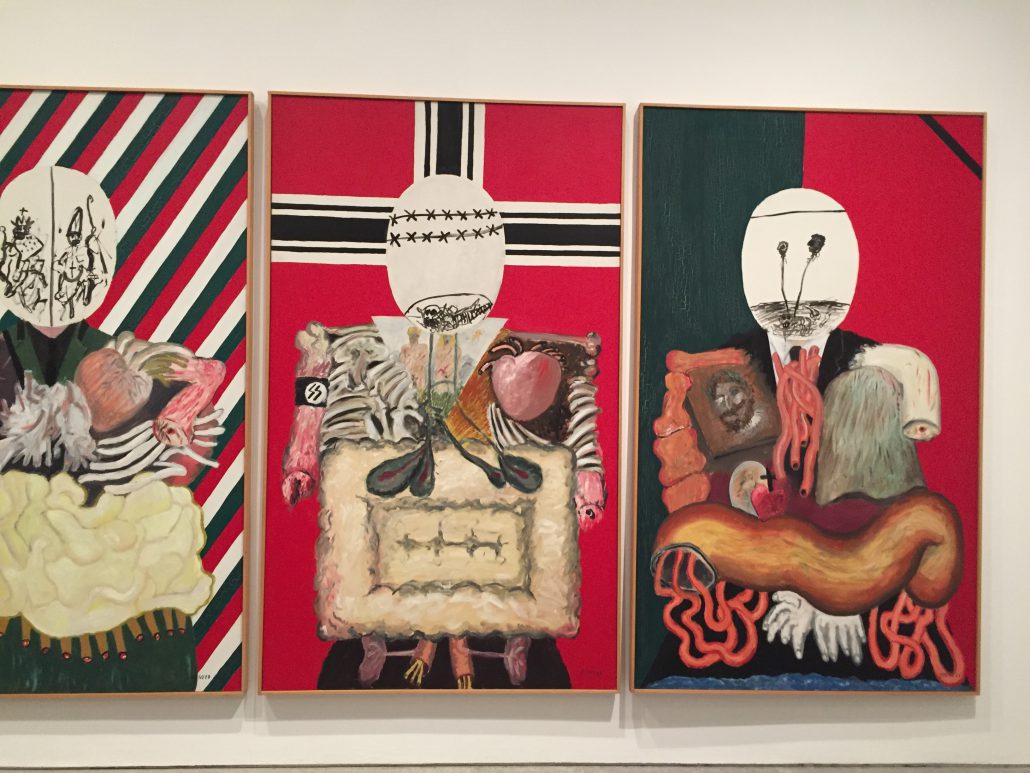
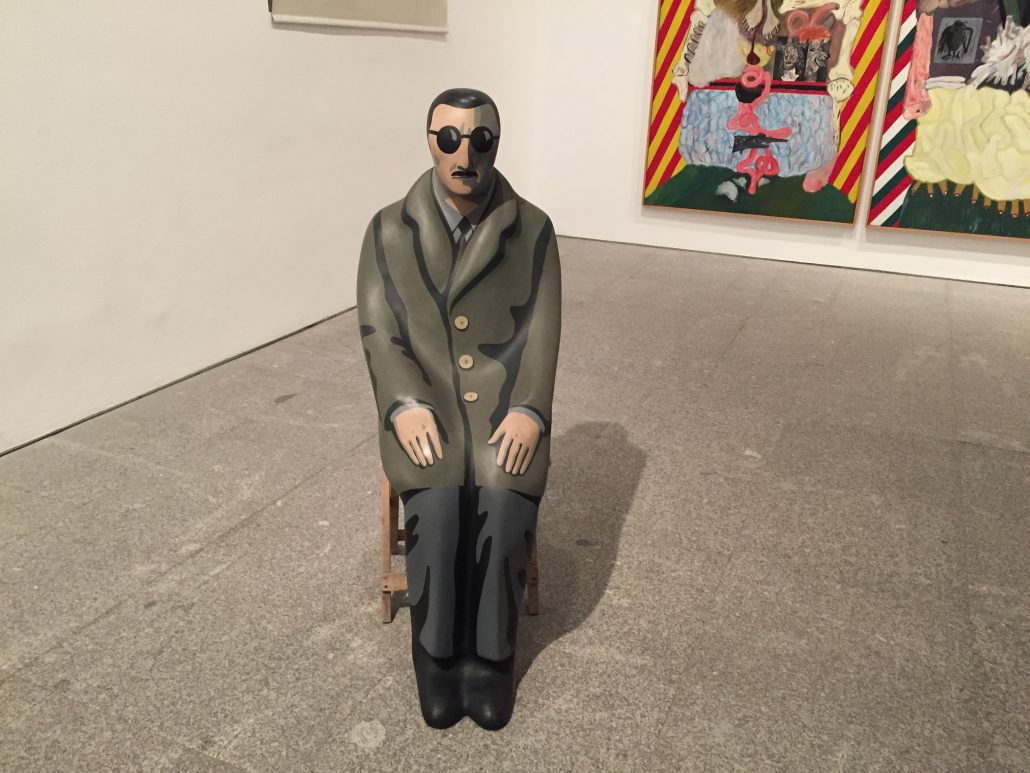
Top: “The Four Dictators”, Arroyo (1937) – as seen at Museo de Reina Sofia. Bottom: “Spectator of Spectators”, Equipo Crónica (1972)
In fact, all of our classes incorporated some sort of study visit, which provided an interesting way for us to engage with our environment while exploring scholarly topics.
In Immigration, Ethnicity and Nation, for example, we visited a center called ACCEM that provides temporary housing services for migrants in Madrid and were able to peek into the lives of those struggling to make it in a new land. During a walking tour of Lavapiés, a neighborhood of Madrid with a higher concentration of immigrants (which also happened to be the neighborhood I lived in: read about my homestay experience here), we also had the opportunity to speak with people on the street about their experiences with immigration and integration in Spain.
As part of Negotiating Identities, we paid a visit to COGAM, the LGBT+ collective in Madrid that is also the main organizer of HIV/AIDS activism in the city. It was particularly neat for me to hear from the organizers in a panel, especially due to my involvement with the Pediatric AIDS Coalition at UCLA and our efforts to bring HIV/AIDS activism to campus.
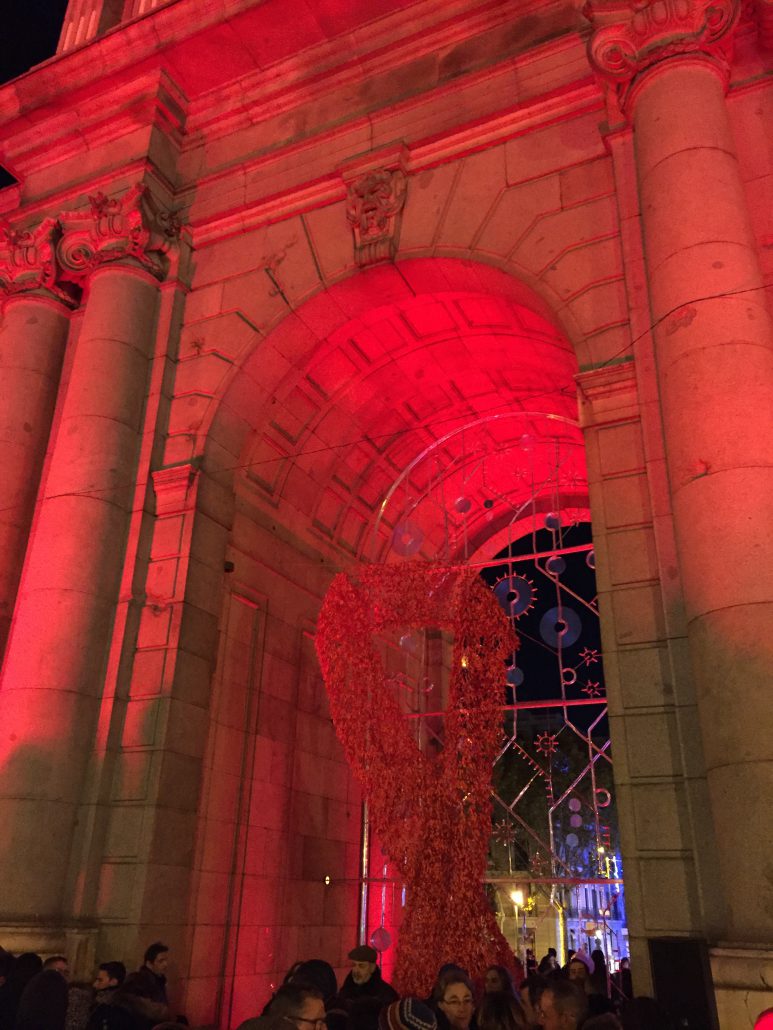
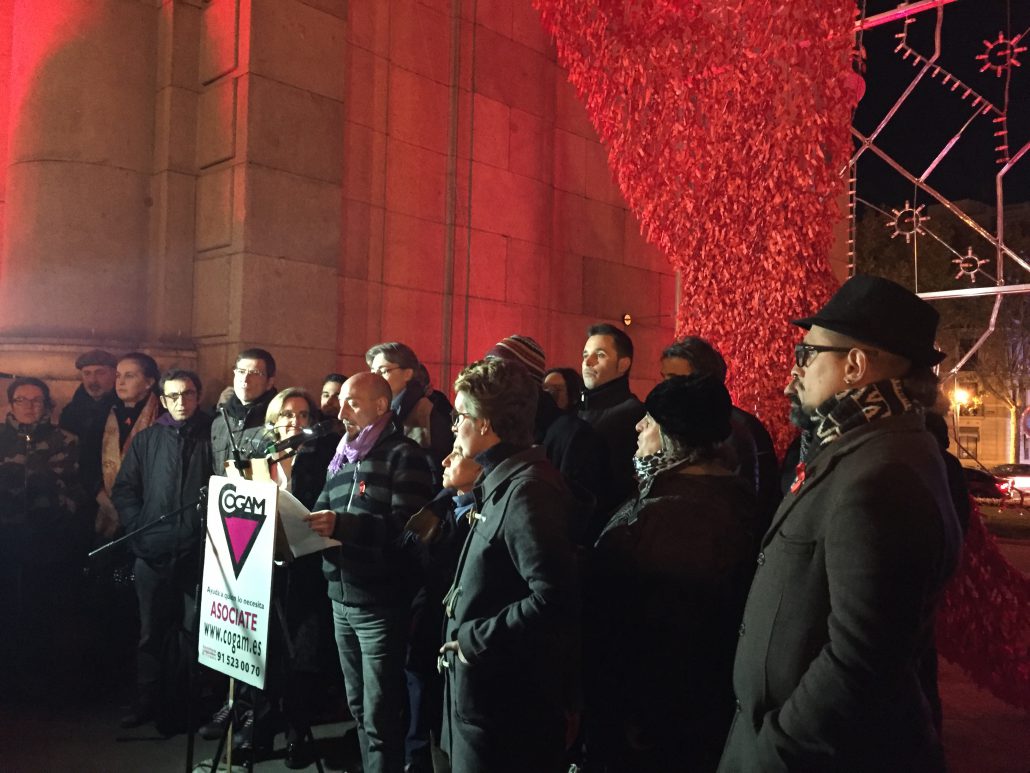
We even had outings in Intermediate Spanish, one of which led us to explore university life in Spain at the Complutense University of Madrid, one of the top universities in Spain, and compare and contrast our own university experiences with those of native Spaniards
These sorts of interactions with the city and local organizations gave me a deeper understanding of Madrid and contextualized many of the concepts we discussed in class. This is something I wish I had in LA, as I don’t feel particularly connected to the community off-campus.
Moreover, the study visits provided inspiration for the research I conducted for my final paper in each course.
In Icons & Images, I chose to analyze Muros Tabacalera, a project commissioned by the city of Madrid on the walls of the Tabacalera, a cultural center and art exhibit in my neighborhood. Since its inauguration in 2014, the selection of murals in the project has changed once, in 2016. Through my research, I compared project topics, styles, and relevance to the city of Madrid. In this way, I was able to use the city as my example for my paper.
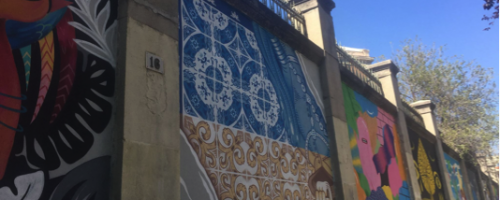

The 2016 installation of the Muros project outside of La Tabacalera
In Negotiating Identities, I chose to focus on neighborhood initiatives and grassroots movements in Madrid, drawing inspiration from Spanish economic history and the site called Campo de Cebada in the La Latina neighborhood. Once again, the study visits acted as a source of academic inspiration.
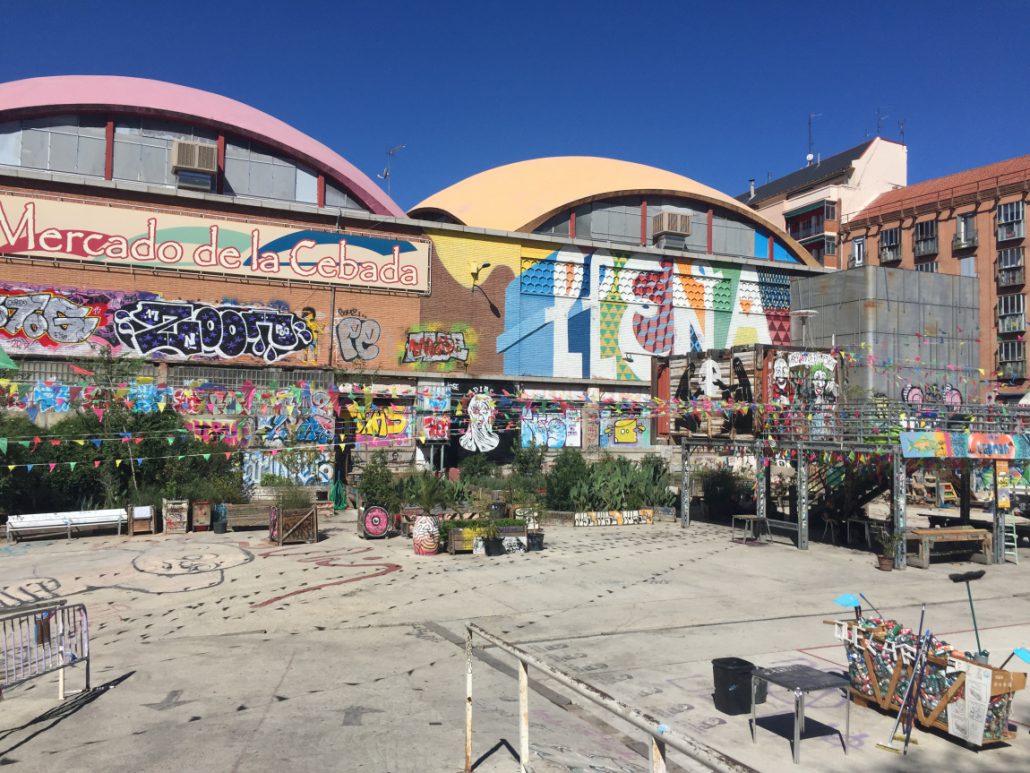
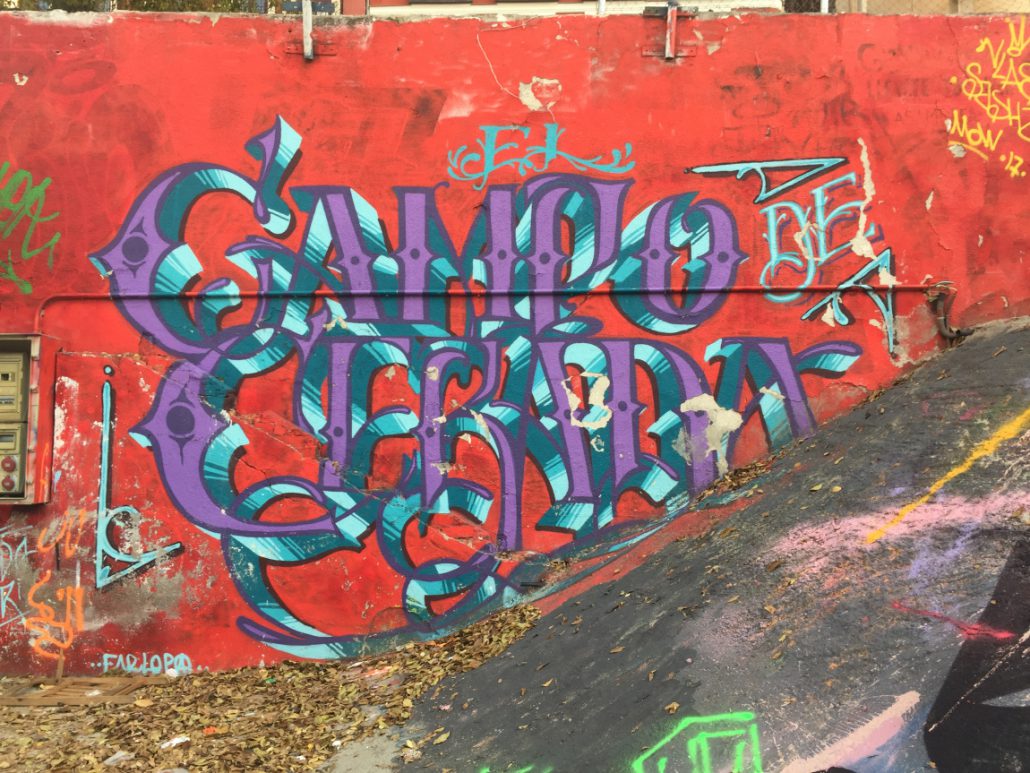
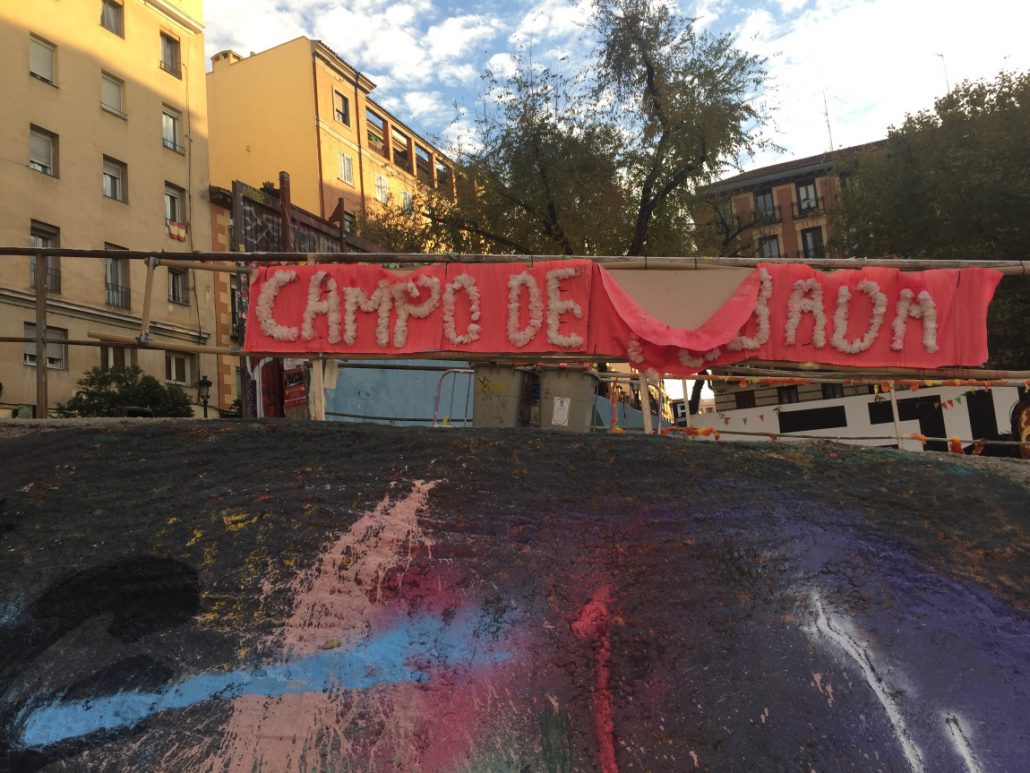
Campo de Cebada
Researching for three 10-page papers at once was incredibly time consuming and overwhelming, but I’m glad my classes gave me the freedom and liberty to learn from the city and look at it from different lenses. As a result, I learned so much more about Madrid and its communities.
Overall, while the classes were challenging at times in terms of workload, they were incredibly rewarding and challenged me to view my surroundings with a critical lens, something I want to try to do more of when I return to Los Angeles.
Study abroad was a different sort of academic challenge, and I am so extremely grateful for the passion of my professors and the challenges presented to me. I had to adapt my study habits to fit new material and I am a stronger intellectual because of it. I hope to keep stimulating the non-technical side of my brain and keep pushing myself to grow.
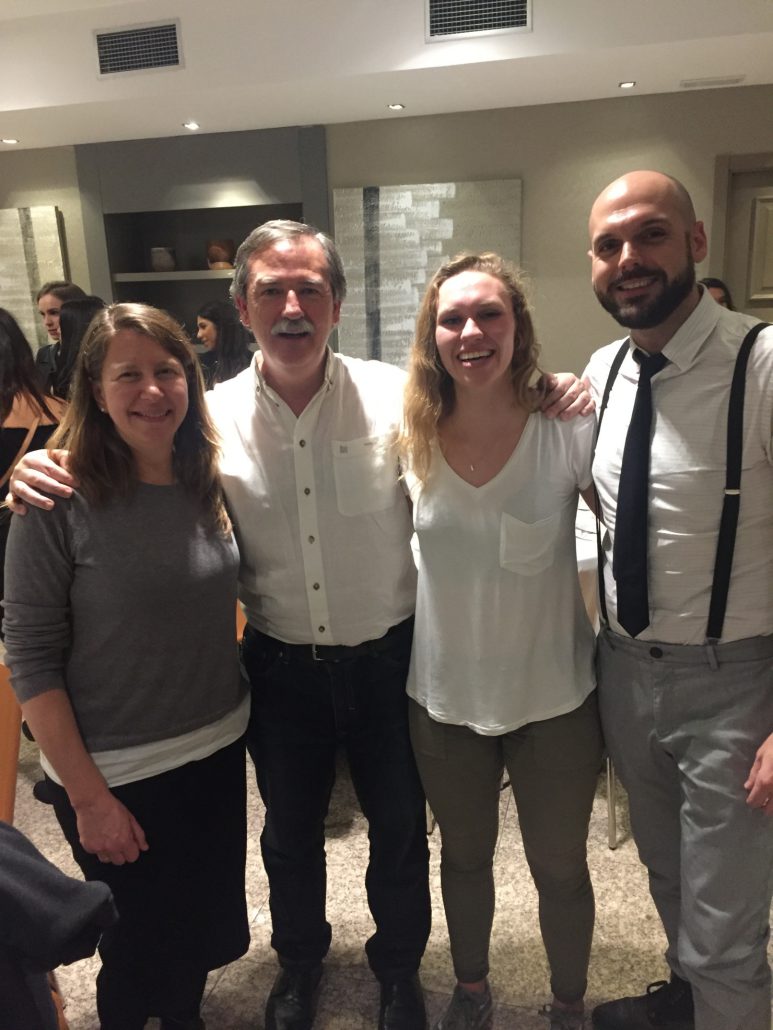
Me and my professors at end of year banquet.
Nina Chikanov studied abroad in Madrid, Spain in fall 2017: http://eap.ucop.edu/OurPrograms/spain/Pages/contemporary_spain_madrid.aspx



